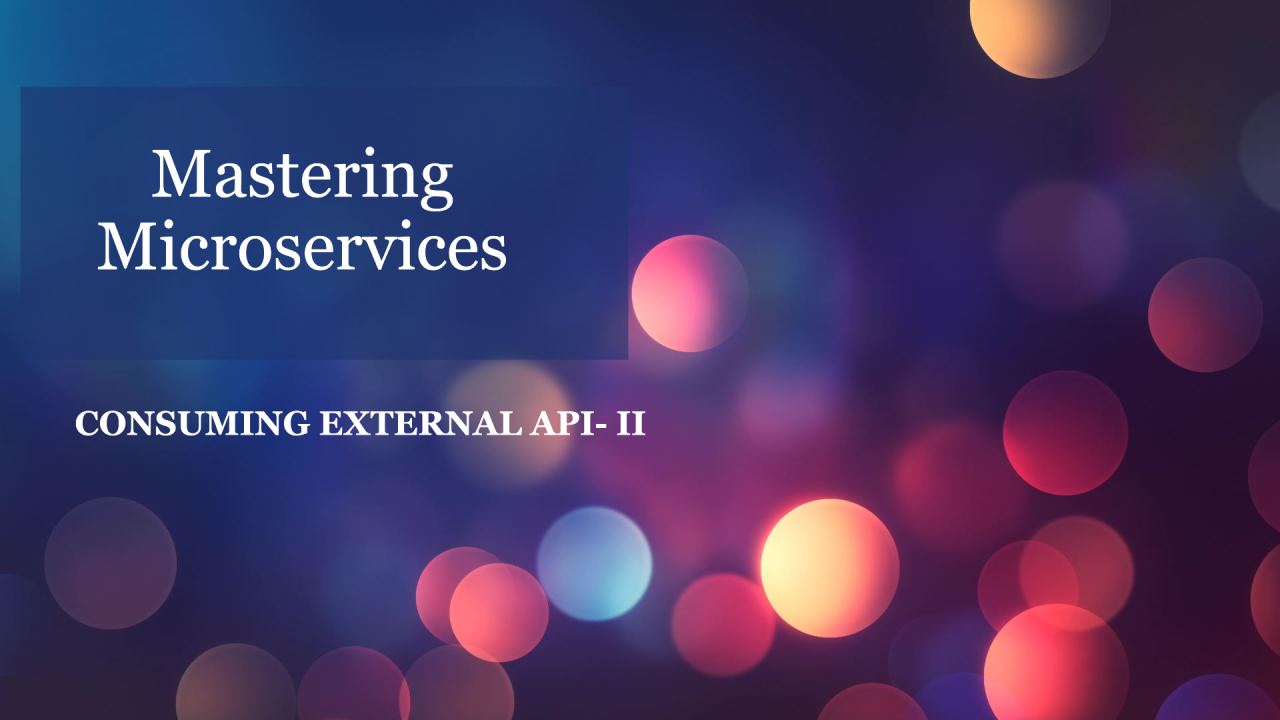
Building Reactive APIs with WebClient in Spring Boot: A Modern Alternative to RestTemplate
Rupasri Guruprasad
Software Developer | Java Developer | Application Support Analyst | Backend Engineer| Specialise in Java, Spring Framework, Hibernate
In a world where microservices and distributed systems are the backbone of modern applications, the need for efficient, non-blocking communication across services is critical. While traditional tools like RestTemplate served us well, they weren’t designed to meet today’s demand for scalability and performance. Enter WebClient, Spring’s reactive, non-blocking solution that enables high-performance communication and is perfect for modern, asynchronous applications.
This guide will take you through consuming REST APIs using WebClient, unravel the differences between Mono and Flux, and explain why WebClient is often the preferred choice over RestTemplate in Spring Boot. Let’s dive in!
Why Choose WebClient Over RestTemplate?
As applications evolve, so do their needs for responsiveness and scalability. While RestTemplate handles synchronous calls, it doesn’t support non-blocking, reactive programming—an area where WebClient excels.
Here are some benefits of WebClient:
In summary, WebClient’s non-blocking design allows it to handle multiple requests concurrently, making it an ideal choice for high-throughput applications.
Mono vs. Flux: What’s the Difference?
When working with WebClient, understanding Mono and Flux is essential. In reactive programming, Mono and Flux represent data flows, but they work slightly differently:
Mono is useful when we expect a single response, like fetching one country by name, while Flux is ideal for handling collections, like retrieving all countries.
Setting Up WebClient in Spring Boot
In this section, we will be using the consume the REST API as in our previous examples, but this time we'll leverage WebClient instead of RestTemplate. This will allow us to make our API calls in a non-blocking, reactive manner.
Common, let’s see the code! You can find the complete code on [GitHub Repository Link]
Step 1: Configuring WebClient Bean
Configuration Layer: WebClientConfig
Configure WebClient as a bean, allowing us to inject it wherever needed in the application.
WebClient.builder(): Sets up the WebClient instance. Here, baseUrl is set to the REST API’s base endpoint, making it easier to define specific paths later.
Step 2: Service Layer with CountryService
This layer contains the core logic to interact with the REST API. Here, we define two main methods to fetch all countries and to search for a country by name. By defining these in the service layer, we keep our controller logic clean and focus on just managing incoming requests.
领英推荐
getAllCountries():
getCountryByName(String name):
The service layer methods handle API data retrieval and map responses to the appropriate reactive types (Mono or Flux) for further processing.
Step 3: Controller Layer with CountryController
The controller layer exposes API endpoints that handle incoming requests and direct them to the appropriate service methods. It prepares the response structure by returning appropriate HTTP statuses.
getAllCountries():
getCountryByName(@PathVariable String countryName):
Why Mono and Flux Make a Difference
Mono and Flux allow WebClient to process data in a non-blocking, asynchronous way, which is crucial in high-traffic scenarios. Mono handles single items, making it perfect for endpoint responses with a single item. Flux manages data streams, allowing it to handle collections with ease. Together, they ensure that our applications are responsive, resource-efficient, and scalable.
Wrapping Up: The Power of WebClient in Modern Applications
WebClient brings a new level of responsiveness and scalability to Spring Boot applications, making it a superior choice to RestTemplate for asynchronous, high-performance communication. Paired with Mono and Flux, it allows developers to create truly reactive applications capable of handling complex data flows smoothly.
With this knowledge, we’re ready to elevate our API communication strategy using WebClient in Spring Boot. By shifting to a reactive approach, we unlock greater flexibility, scalability, and resilience in our services, making them well-equipped for real-world, high-demand scenarios.
Happy coding, and may our services always be reactive and resilient! ??
For the complete code and project structure, check out the GitHub repository.
#SpringBoot #WebClient #Microservices #APIintegration #Java # Day9 #LearnTogether